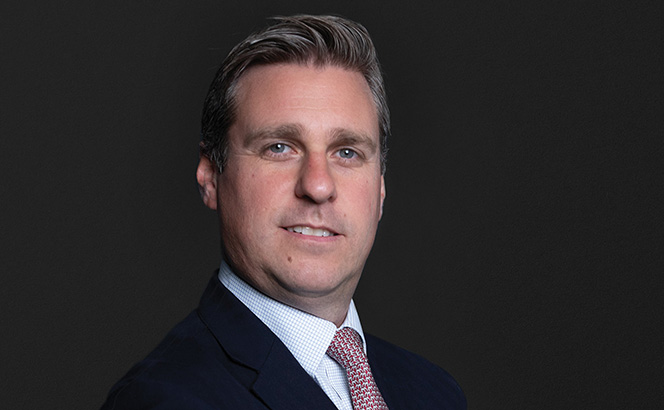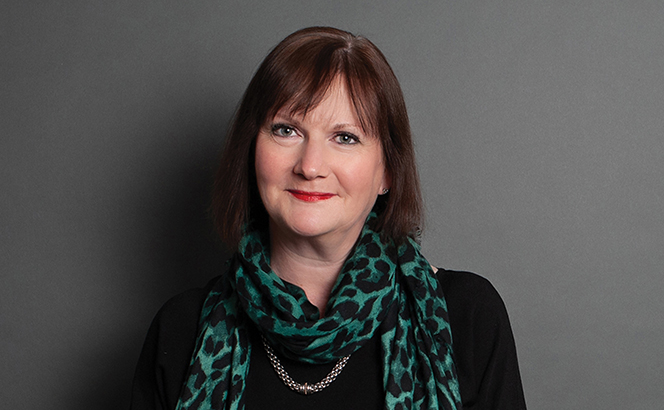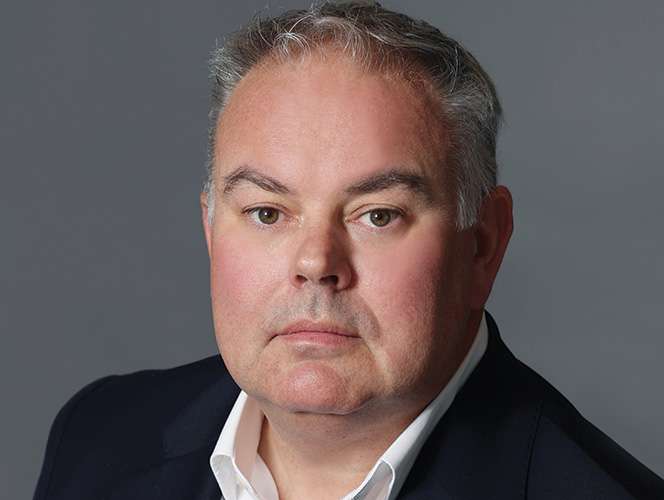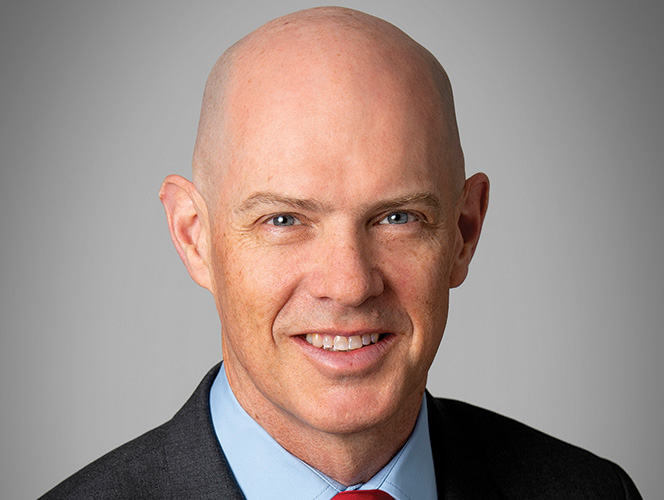Leading life sciences partners size up recent regulatory reforms and assess the UK’s position in a post-Brexit, post-Covid world.
After years of delays caused by geopolitical instability and the Covid-19 pandemic, the new regulatory landscape for the life sciences industry is beginning to take shape in both the UK and the EU.
As the UK pushes ahead with its post-Brexit journey of divergence, establishing itself as an innovation-friendly environment in the global life sciences market has become of paramount importance. In contrast, the EU’s attempts to draft comprehensive laws on AI have attracted criticism from the medical devices industry, prompting overburdened innovators to turn to more investment-friendly locations.
‘It’s all about trying to allow innovation into the market, but at the same time protecting public health.’ Michael Gavey, Simmons & Simmons
Meanwhile, the new EU pharmaceutical package, which was intended to help harmonise legislation across member states, has cast a shadow of uncertainty over the industry. Here, leading life sciences partners offer their verdict on the current state of the market, and the UK’s position within it.
Brexit and beyond
The UK left the EU before the adoption of new European legislation around medical devices and pharmaceutical products. But with international collaboration and idea-sharing commonplace across the global life sciences industry, partners working in the sector have mixed views on the impact the exit will have in the longer term.
‘What I can’t use my crystal ball for is to see how the UK will carry on beyond Brexit’ notes Sally Shorthose, co-head of the life sciences and healthcare practice at Bird & Bird. ‘The impact on the UK market could go one of two ways,’ she observes. ‘We could be pushed out because we’re not interesting enough, or it could be that we’re used as a test market because we’re still subject to the earlier regime’.
Covington & Burling life sciences partner Robin Blaney adds: ‘Companies are finally waking up to the fact that there is already divergence now, and that divergence is only going to get bigger’.
While Shorthose believes that the UK is still seen as a significant market, she notes that there may be problems further down the line – for example, that the UK’s decision not to adopt European clinical trials regulations ‘could mean that the UK, and certainly Great Britain, gets left out of new clinical trial initiatives’.
Brexit has also had an impact on the availability of scientific talent in the UK, with immigration changes meaning that it is no longer as straightforward for clinicians, scientists, or researchers to come into the UK anymore.
The UK joined the EU’s funding programme for research and innovation, Horizon Europe in December 2023 and Shorthose is hopeful that, despite Brexit, in time there may be ‘more collaboration and less deviation for the sake of deviating’.
‘While the EU has gone for this big, cross-sector, horizontal piece of legislation in the form of the AI Act, the UK has rejected that approach.’ Jaspreet Takhar, Baker McKenzie
Blaney is similarly confident that the UK Medicines and Healthcare products Regulatory Agency (MHRA) will opt to ‘cherry-pick pieces of legislation to implement’ from the new EU pharma legislation, rather than going completely its own direction.
Michael Gavey, who leads the UK healthcare and life sciences team at Simmons & Simmons, predicts that while post-Brexit, the UK wants to be seen to be forging its own political path, there is also an element of ‘wanting others to then follow’.
Regardless of how it plays out in the longer term, Brexit has undeniably had a significant impact on the way life sciences lawyers are working. As Blaney points out: ‘Pre-Brexit, I was largely just advising at an EU level. Now, post-Brexit, I’m back to being a UK lawyer as well as an EU lawyer, and there are differences. We are seeing UK-specific queries in a way that five years ago, we just didn’t receive’.
Circling success
Such queries cover a host of areas, with partners preparing for the introduction of the new Voluntary Scheme for Branded Medicines Pricing, Access and Growth (VPAG) at the start of 2024 after months of tense negotiations. Lawyers in the sector are also predicting an increase in activity as the UK pitches itself as a more innovation-friendly market than the EU.
‘The UK Government has been very clear that they will do what it takes to remain a key player in life sciences’ notes Marie Manley, who leads the London life sciences team at Sidley Austin. She adds that ‘the MHRA has created a new international recognition route for medicines utilising pre-existing approvals by trusted regulatory partners to expedite access to safe and effective medicines’.
Jane Summerfield, who leads the Hogan Lovells life sciences regulatory and commercial practice in London, echoes these sentiments, saying that the international recognition system is a ‘game changing’ approach, similar to that taken by Australia and the Middle East, noting that ‘this is a fundamentally significant change which impacts everything commercially’.
But despite this positive step, Blaney notes that ‘some companies are focusing on the EU as a bigger market, getting approval there first, then coming to the UK as an afterthought’. While some may argue this potentially frees up resources at the MHRA to focus on more innovative applications, there are still risks in terms of the UK’s competitive position.
Medical devices and innovation
In March 2023, the UK Life Sciences Council, which brings together government ministers and industry professionals, formed a new advisory group to provide proposals for reforms to medical device regulations in the UK, with particular emphasis on international recognition, routes for innovation, and system capacity.
While the intention was to create a new post-Brexit regime out of the shadow of the EU, the reality has panned out slightly differently with regards to the UK Conformity Assessed (UKCA) marking framework, the UK’s successor to the EU’s ‘CE’ product marking requirements.
As Gavey explains: ‘The idea is to overhaul the medical device regulation, but many of the proposals that have been put forward are there to align with the EU’.
‘Big Pharma would say the new EU pharma package is quite pro-patient but not particularly pro-industry.’ Sally Shorthose, Bird & Bird
Covington partner Sarah Cowlishaw describes the UK move as a ‘full circle approach’, noting that the MHRA is engaged in talks about ‘not moving to a mandatory UKCA mark for medical devices, but rather continuing to recognise the [European] CE mark’. The EU is being equally collaborative, with Cowlishaw pointing out that the EU ‘don’t want to stop companies coming to the UK at all – they want to make sure that we still have access to the market’.
But while the UK and EU are collaborating, there are distinct differences in approach. For example, the UK’s approach to regulating software as a medical device is more open and less rigid, and the EU’s proposed AI Act has thrown yet more spanners into the works.
Baker McKenzie healthcare tech regulatory associate Jaspreet Takhar says: ‘While the EU has gone for this big, cross-sector, horizontal piece of legislation in the form of the AI Act, the UK has rejected that approach’. Gavey agrees, speculating that the UK position is ‘probably more likely to be in guidance than hard law’, which may lead to questions around the practical aspects of compliance.
According to Takhar, the UK is asking existing regulators to issue guidance about specific risks as part of its bid to make the UK more innovation-friendly for AI developers. She points out that some positive impact from the move can already be seen: ‘AI developers are sometimes choosing to launch products in jurisdictions like the UK before they do so in the EU, so it does seem to be working’.
However, Takhar warns that it is not a risk-free approach, noting that ‘by not regulating risk at all, the UK is leaving quite big gaps in regulation, which could be exploited, and not in a positive way’.
Gavey adds that ‘it’s all about trying to allow innovation into the market, but at the same time, protecting public health’.
Striking fear in clients
If the UK is taking a relaxed stance to regulation as it battles to stay relevant after leaving the EU, the same is not true of its former stablemates. Having come into force in the summer of 2021 after being beset with delays, the EU Medical Device Regulation (MDR) places restrictions on substances within the production and design of medical devices, imposing labelling requirements and precautionary measures; while the In Vitro Diagnostic Regulation (IVDR), which came into force in May 2022, aims to impose increased regulatory requirements on manufacturers in terms of device traceability, and clinical evidence and post-market performance, in addition to introducing a new classification system. Both the IVDR and MDR also introduced conformity assessment bodies, known as notified bodies.
Meanwhile, in April 2021, the European Commission took a step into the unknown and proposed the AI Act, which aims to ensure that AI systems used within the EU are regulated using a risk-based approach, in which differing levels of perceived risk create different obligations for both providers and users.
Aggravated by both the Covid-19 pandemic and the war in Ukraine, the addition of stricter regulatory obligations under the IVDR and the MDR, and the lack of authorised notified bodies, has created issues around certification. As a result, in January 2023 the European Commission (EC) proposed an extension under which compliant devices under the old regime can still be placed on the market.
With concerns about innovation being stifled echoing throughout the industry, lawyers in both EU and non-EU member states are concerned that all of these disparate regulations will impose uncoordinated obligations on life sciences companies seeking to access the European market.
Simmons healthcare and life sciences co-head Annabelle Bruyndonckx notes that ‘almost all manufacturers have revised their portfolios of both IVDs and medical devices’. She emphasises the difficulties that clients face as a result of the inconsistent approach of notified bodies across Europe in terms of classification, particularly in relation to software as a medical device.
Takhar, meanwhile, notes that the practice has ‘seen some clients pause or delay EU launches because of the perceived regulatory environment in the EU, whilst going ahead more quickly with jurisdictions which are perceived to be more AI-friendly, like the UK and the US’.
When it comes to the AI Act in particular, Takhar comments on the difficulties clients face ‘entering a space where the regulatory landscape is shifting under their feet’, investing heavily in compliance just to stay afloat amidst the myriad of legislative developments or risk heavy penalties for breaching compliance obligations.
Takhar warns that the potential penalties for breaching new legislation are ‘putting the fear of God in clients’. Expanding on the perceived regulatory burden of having to comply with both the AI Act and the MDR, Takhar explains, ‘if you are a manufacturer of AI as a medical device, the good news is that the EU is aware that you need to comply with two massive legal regimes in the form of the EU Medical Device Regulation and EU AI Act’. But, if something goes wrong with your AI as a medical device, companies will ‘potentially need to liaise with two unconnected regulators, and it’s not clear how much those two regulators are talking to each other’.
According to Takhar, ‘the MDR was designed in a world that wasn’t ready for AI, and not even ready for software’. She argues that it is therefore ‘quite inflexible when it comes to change control requirements, which is at odds with the AI world, where models are constantly evolving’.
New ideas, new rules
In an attempt to overhaul pharma legislation across the EU, the proposed new EU pharma package seeks to readdress the balance between supporting EU citizens in their access to medicines, while also making the EU an attractive investment space for the global pharmaceutical industry.
The proposals have met with tidal waves of criticism. Concerns raised include:
- that safety standards may be sacrificed in exchange for quicker market authorisation processes;
- that companies may fail to meet proposed targets relating to bringing products to market; and
- the lack of guaranteed availability of new antibiotics.
These concerns have, in the eyes of some partners, snowballed into broader fears that the EU is becoming less innovation friendly.
‘I thought it was supposed to make things easier!’ laughs Blaney, reflecting on the feeling that the proposals, particularly around regulatory data exclusivity, are far more complex than initially intended. Acknowledging the irony given that the package was intended to stimulate innovation, Manley comments: ‘Unfortunately, it is likely to have a detrimental effect on the patient population in the EU – this is very likely to affect the level of investments in the EU’.
‘It is unclear where and when the EU pharma package will ultimately land.’
Els Janssens, Baker McKenzie
Baker McKenzie corporate healthcare partner Phelim O’Doherty notes that pharma companies are thinking ahead and weighing up the costs of dealing with increased regulatory burdens in the EU or going elsewhere, and his colleague at Bakers, Julia Gillert, argues that ‘at this stage, companies could aim to avoid delays and launch products as soon as possible.’
Partners also point to the additional complexity and lack of certainty during development as particular sticking points in the plans.
The package is intended to balance patient interests and innovation, but partners are divided about who it favours. Shorthose notes that ‘big pharma would say that perhaps it’s quite pro-patient but not particularly pro industry’.
The controversy surrounding the proposals prompts Bakers’ Brussels based counsel Els Janssens to stress that: ‘it is still early days in the legislative process and the topic is highly sensitive, it is unclear where and when the EU pharma package will ultimately land – it is already clear that there are opposing views on the topic within the European Parliament and the Council’.
She offers a word of warning for clients, saying ‘companies will need to focus on building and maintaining robust, sustainable and transparent supply chains’ and factor that into their planning around the proposals.
The optimistic outlook
While all of the upheaval at both UK and EU level bring considerable challenges, partners are broadly optimistic. With change comes opportunity, with the avalanche of regulatory change triggering an increase in work for partners. There will also be a need for in-house teams to develop their skillset and broaden their breadth of expertise to deal with the novel issues in their in-trays.
The rapid adoption of AI and new technology in medical devices and digital health means clients are changing – and so is the advice they seek. As Takhar comments: ‘the healthcare and life sciences players already know the healthcare regulatory framework really well, but the data side of AI feels newer to them; the tech and startup players are more familiar with the tech world and less familiar with the healthcare regulatory world. All of these players have different blind spots.’
Herbert Smith Freehills London IP partner Jonathan Turnbull concludes: ‘2024 will be interesting. The courts will grapple with protections for platform technologies and AI, and the government and MHRA will grapple with modernising the regulatory pathway. Combined, this could influence the attractiveness of the UK and its ability to become a global hub for life sciences.’
This article first appeared on Legal Business.






